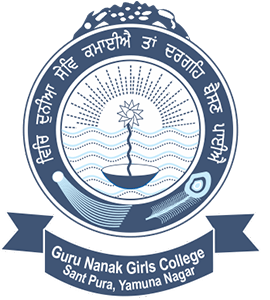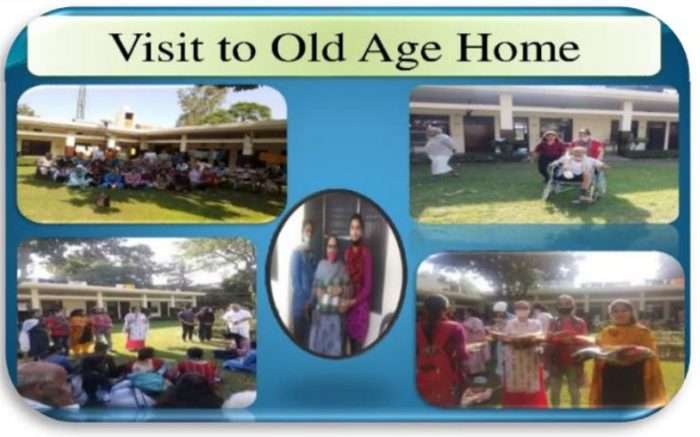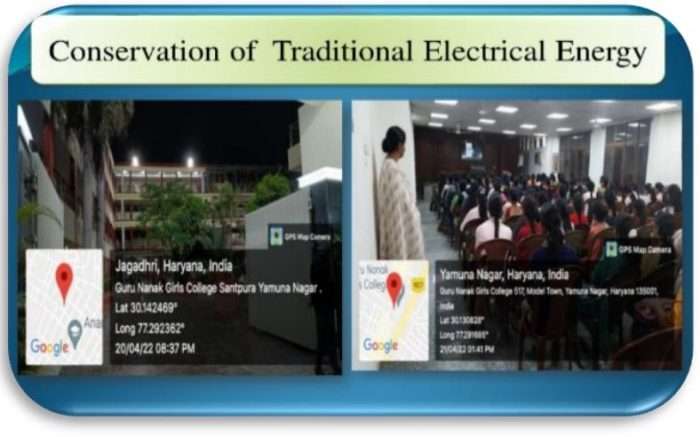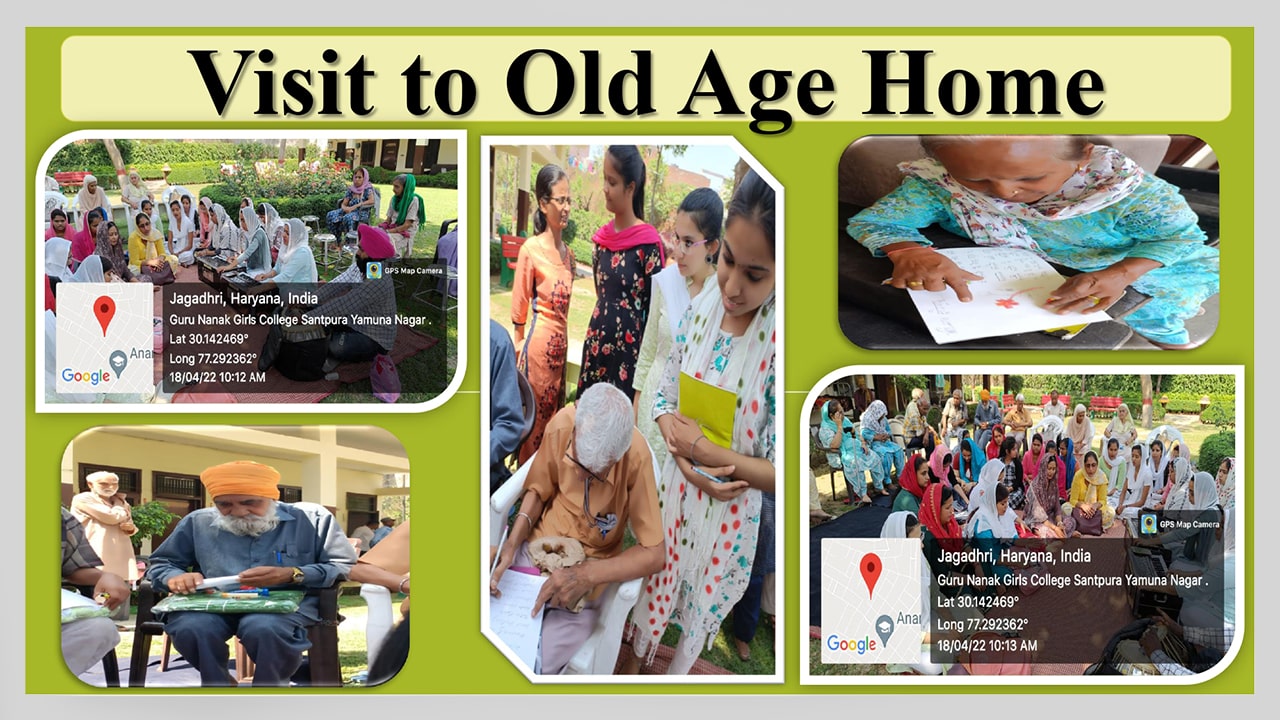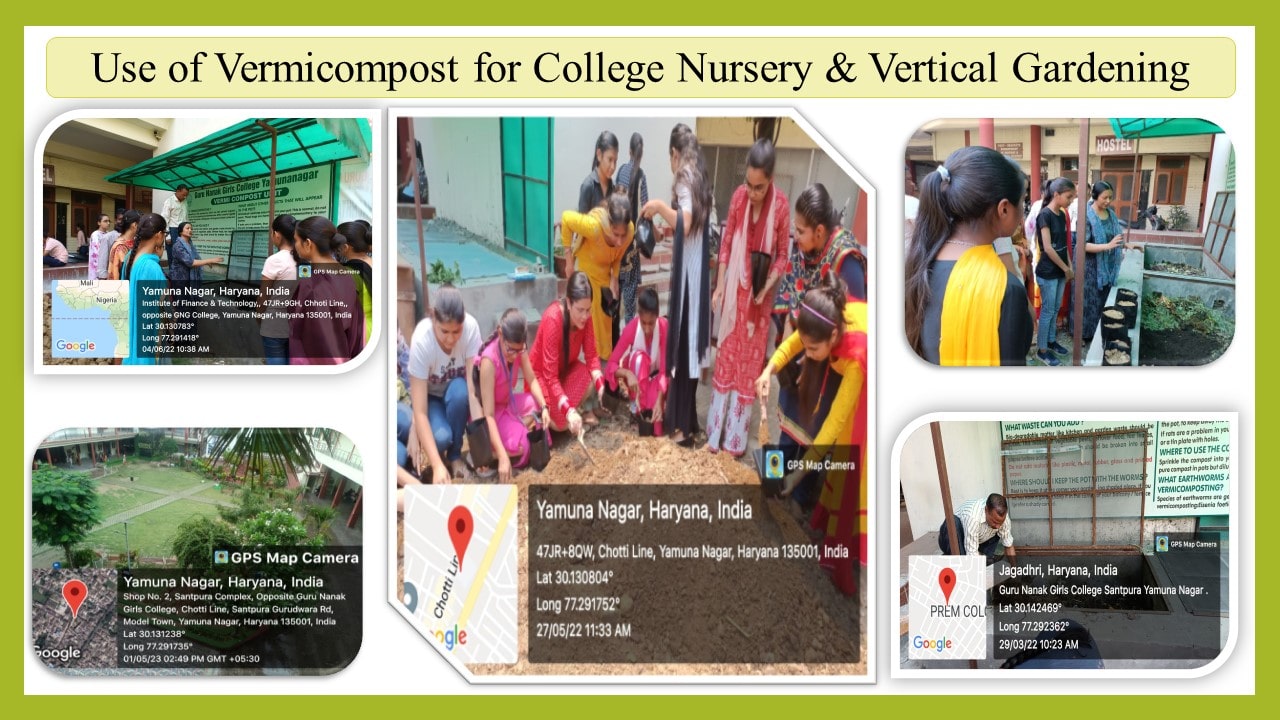Best Practices - I (2023 - 2024)
Title: Community Engagement Initiative by Instilling Elder Sensitization among Faculty and Students
Objectives of the Practice: The objectives of this practice were:
- Increasing students' understanding of the problems that older people confront
- Instilling in the students the importance of assisting the old and spending time with them
- Teaching students how to treat the elderly with dignity and respect
- Providing the elderly with companionship and emotional support
- Building a sense of belonging in the community
- Promoting lifelong learning and personal growth
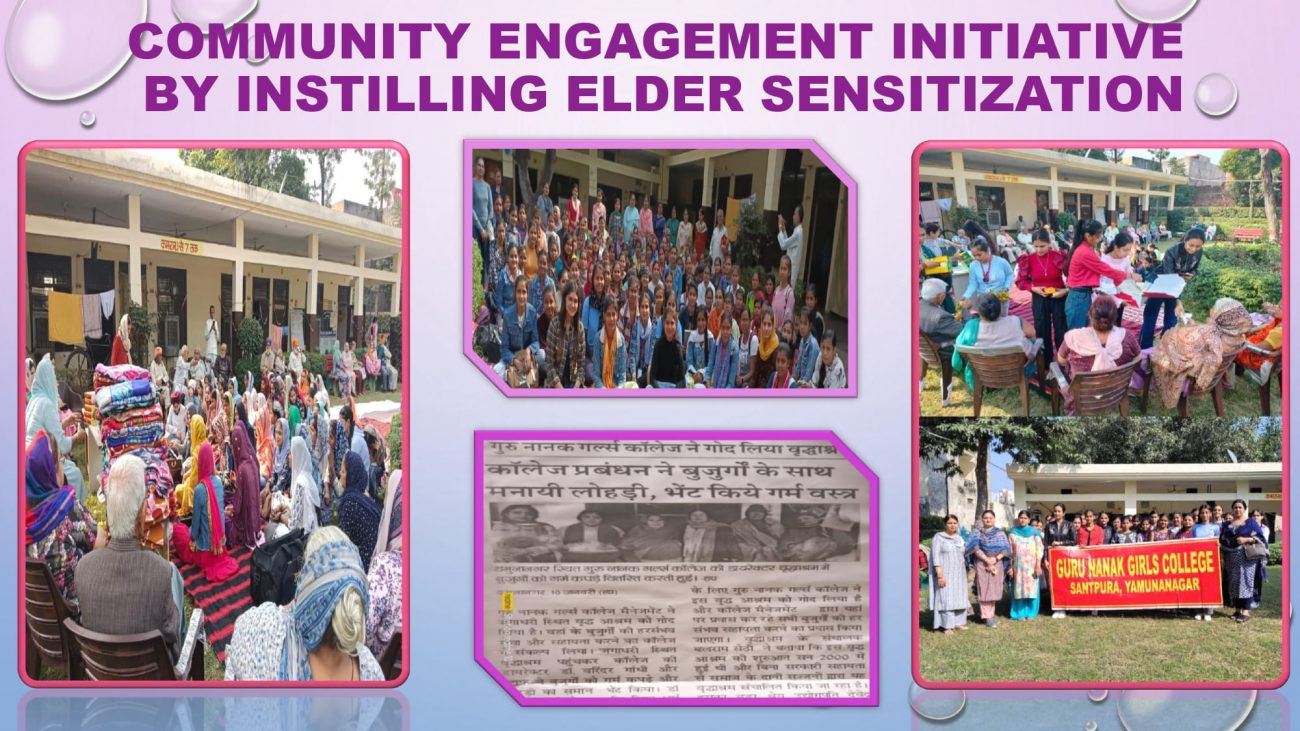
The Context:
The Practice:
During a quick devotional song and dance program, the youngsters spread smiles. They had an absolute blast with us. The experience proved to be fulfilling for both the students and the residents. Rather than their valuable presents or money, the elderly need someone who can spare their time and affection. This was emphasized. They never needed anything more than a helping hand and a good heart. The essential principles of humanity and the importance of demonstrating unconditional compassion for the elderly were better understood by the volunteers.
Evidences of Success:
Problems encountered and Resources Required:
Best Practices - II (2023 - 2024)
Title: Practising Student-centric Approach for Holistic Development of Students
Objectives of the Practice: The objectives of this practice were:
- Personalized learning: Students are given the opportunity to decide what and how they learn.
- Critical thinking: Students are encouraged to develop critical thinking skills that they can apply in other contexts.
- Collaboration: Students work together to solve problems and answer questions.
- Active learning: Students are encouraged to discuss, explain, debate, and brainstorm.
- Experiential education: Students participate in activities like internships, industrial visits, and fieldwork.
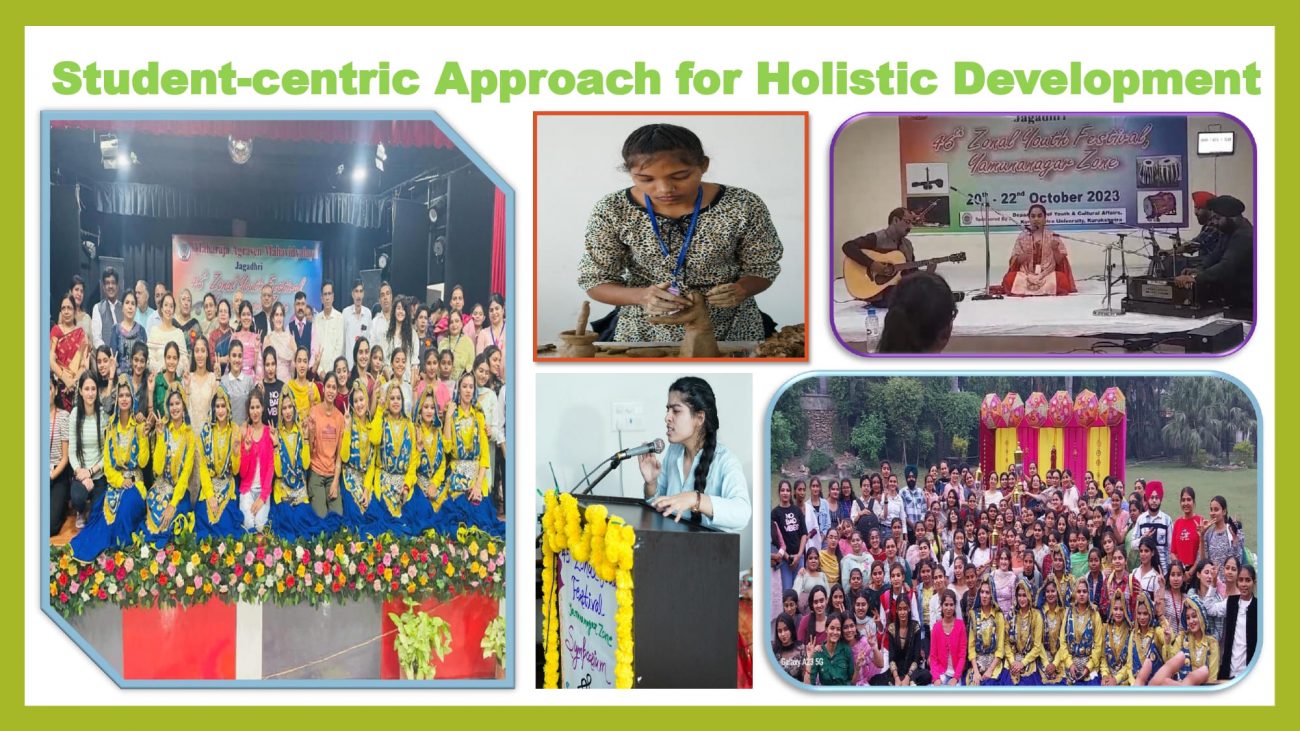
The Context:
The Practice:
Evidences of Success:
2. Student Support Services: Provide access to counseling, academic advising and other support services to ensure students’ overall well-being. The role of student support at our college is indispensable in shaping a well-rounded, successful college experience. By offering comprehensive support services, our not only enhance academic performance but also contribute significantly to the personal and professional development of our students.
Extracurricular Activities:
Problems encountered and Resources Required:
Scheduling conflicts: Mentors and mentees may have other commitments that make it difficult to meet regularly.
Lack of structure: Without clear goals and objectives, mentoring relationships can lack direction and purpose.
Lack of executive support: Without backing from top management, the program may not gain momentum.
Low-quality mentors: Mentors who are not motivated to help their mentee succeed can be less effective.
Communication barriers: Communication barriers can include mentor traits, personal background, and professional background.
Funding: Extra-curricular activities can face financial constraints, such as a lack of funding or difficulty collecting dues.
Time management: Students may not have enough time to participate in extra-curricular Activities due to their academic schedules.
Student interest: Some students may not be interested in participating in extra-curricular activities.
Faculty support: There may be a lack of enthusiasm or buy-in from faculty and staff.
Academic calendar: Extra Curricular Activities may conflict with academic activities.
B. Resources required
Guides: Help mentors and mentees understand their roles and expectations
Meeting agendas: Help organize conversations and ensure topics are covered
Meeting logs: Document conversations and progress
Mentor training: Help mentors develop their skills
Mentor-mentee matching tools: Help ensure effective matches
Funding: Extra-curricular activities may require funding to cover costs.
Faculty support: Faculty and staff may need to be enthusiastic about extra-curricular activities and be willing to support them
Time: Students may need time to participate in extra-curricular activities, which may require them to manage their time between studying and extra-curricular activities
Best Practices (2022 - 2023)
Educating Students and Faculty Members about Elder Sensitization
Objectives of the Practice: The objectives of this practice were:
- To raise students' awareness of the issues faced by the elderly
- To teach the pupils how to treat the elders with respect and consideration
- To inculcate in the students the value of helping the elderly and spending time with them
- To offer emotional support and companionship to the elderly
Context:
Getting older brings with it a wealth of insightful lessons learned. We get to spend time and gain from the experiences of elderly people when we visit an old age home. One of the moral values that students should be taught is to respect and care for their elders. Visits to Old Age Home are intended to help the students understand their social obligations towards the elderly. These trips also help the students' cognitive processes to become aware of the suffering and anguish that elderly people endure when living apart from their loved ones. Further, the goal of the visits was to educate them on how to communicate with senior citizens who may have various health issues related to ageing, including hearing and comprehension. The goal of this practice was two-fold: first, to identify ways in which our students could assist the elderly and give them a sense of security and happiness; and second, to design a society in which Old Age Homes would not be necessary. Hence, the ultimate goal is to sensitize the youth towards the aged.
The Practice:
The visits were emotional and sentimental, and they turned out to be a life-changing experience for approximately thirty senior citizens who were over 58 years old and lived in the Old Age Home in Jagadhari. We added vibrancy to the otherwise gloomy atmosphere of these kind souls. Staff members and students offered food, clothing and other necessities on behalf of our college. Nearly every bed was visited by the sympathetic GNGites who spoke to the residents and found out more about them. It was unexpected but a pleasant surprise that each one of them could share anecdotes about their early years, school experiences and even discuss politics, the generational divide etc.
Smiles were spread during a brief devotional song and dance programme by the students. They thoroughly enjoyed having us around. Both the residents and the students found it to be a satisfying experience. The point that elderly people need someone who can spare their time and affection rather than their priceless gifts or money was hammered home. All they ever required was a helping hand and a kind heart. The volunteers gained an understanding of the fundamental values of humanity and the need of showing unconditional love to the elderly.
Evidences of Success:
We had a great time visiting the elderly home and we left with more than just fond memories; we learned some important lessons about the fundamentals of humanity. With love and blessings bestowed upon the visiting group of students and faculty members by the elderly, the visit to the Old Age Home came to an end. With teary eyes, they bid us farewell and we promised to visit them often. Our college authorities are planning to adopt this Old Age Home.
Problems encountered and Resources Required:
When they were first visited, the elderly were not prepared to leave their rooms or comfort zones. Although they weren't prepared to talk and share with the student volunteers during initial visits but with our sincere and committed efforts we not only succeeded in bringing them together in a shared location but gradually we also made them comfortable enough to share their experiences. As a result, they were able to strengthen their bonds with our group of facilitators and students as well as with one another. They began opening up to us about their issues and pouring out their hearts during increasingly frequent visits. Even though the Old Age Home administration was giving them best emotional and first-rate medical care, our students felt that these facilities required more frequent visits and financial help from samaritans. Additionally, services like hearing aids and other facilities to help them deal with age-related issues could be offered. They eventually developed a close bond with our team as a result of the interactions. Our faculty and students contributed financially to meet their needs. The contributions were made to meet their needs on priority basis.
Preservation of Conventional Electrical Power
Objectives of the Practice: The objectives of this practice were:
- To lower demand, safeguard and restock supplies.
- To create and employ substitute energy sources.
- To repair the harm caused by previous energy processes
- To attain and sustain optimal energy procurement and utilisation across the entire organisation
- To minimise energy costs and waste without compromising production and quality
- To minimise environmental impacts
The context:
A student’s success in college is influenced by a variety of factors, including strong study habits, engaged professors and useful campus resources. All of these things go towards making college an enjoyable experience. Unbelievably, there is another facet of college life that is frequently disregarded, but it nonetheless affects every student’s experience and success: lighting. The cost of operating an educational institution rises in tandem with the demand for college tuition. Numerous student facilities require continuous lighting during the day. Lighting costs tend to surpass the budgeted amount because electricity is used continuously. It is therefore imperative that college administration installs energy-efficient LED lighting fixtures in order to reduce electricity costs. Installing LED lights in college campuses has many advantages beyond just being environmental-friendly and energy-efficient.
The Practice:
In the college, the majority of lights in the classrooms and restrooms have LED fixtures installed. It is crucial to ensure safety when moving between the hostel complex and campus at night and during evening events. So the common areas and corridors that need to be lit for at least 12 hours every night have also been installed with LED lights. These LEDs have done a great job in meeting various requirements. In addition to offering lower energy consumption and superior light quality, LED light bulbs typically have a lifespan of more than ten years, which minimises maintenance expenses too. Electrical energy usage has decreased significantly since LED lighting has been used and has proved to be cost-effective.
Evidences of Success:
Among all areas, campus lighting may be the most promising in terms of return on investment. Compared to incandescent bulbs, LEDs can save up to 90% on energy consumption thereby resulting in a significant reduction in power expenses. Furthermore, the extended lifespan of LEDs has also reduced maintenance and replacement costs thereby saving money and energy.
Problems encountered and Resources Required:
Even though solid-state lighting based on LEDs is still gaining popularity and many significant obstacles have been overcome, some still need to be overcome. Though LEDs have been adopted widely due to energy savings and the cost savings that come with a long product lifetime, however high upfront costs, transformer compatibility, possible colour shift over their life tenure, a lack of performance standardization and the possibility of reduced lamp life due to overheating are some of the drawbacks and issues.
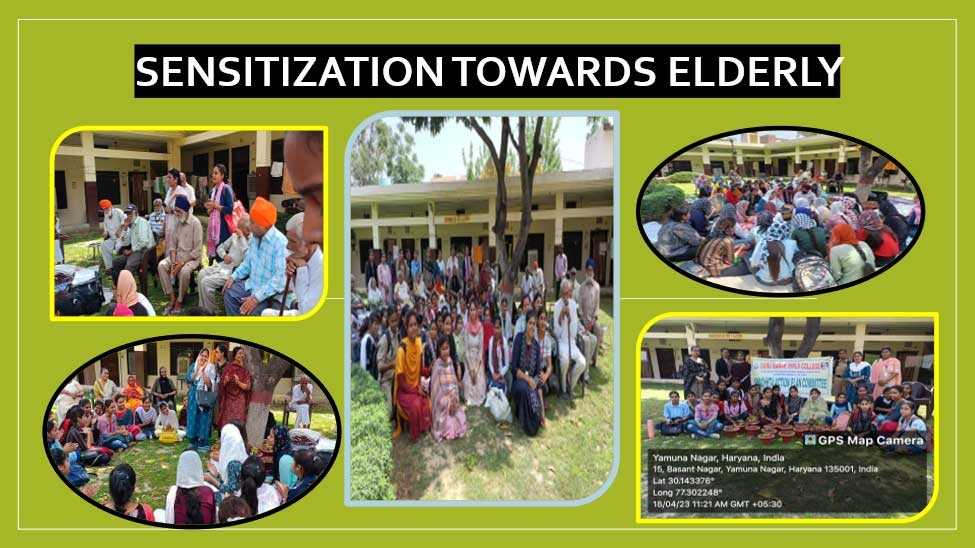
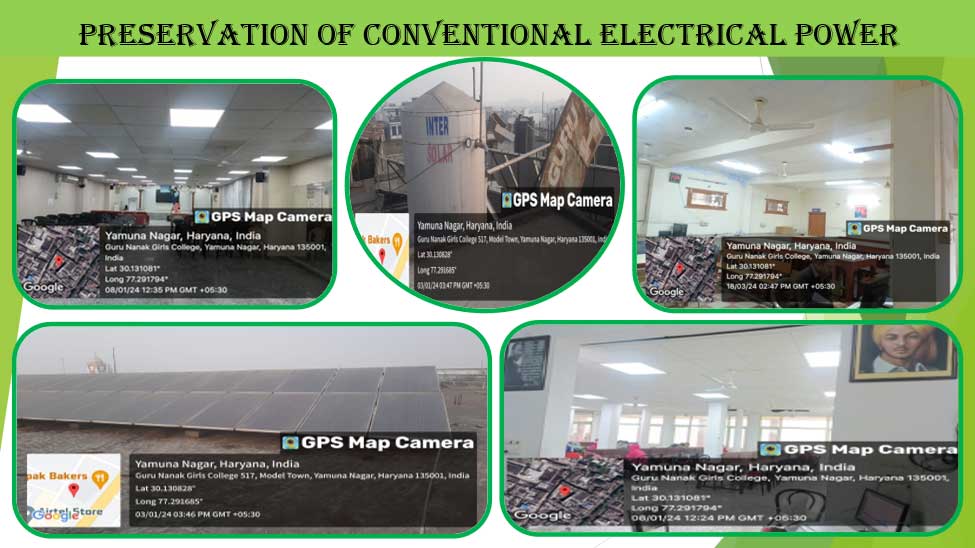
Best Practices (2021 - 2022)
Inculcation of Sensitization for the Elderly among students and Faculty members
Objectives of the Practice:
- To sensitize the students about the problems faced by the elderly
- To make the students learn how to respect them and care for them
- To aware the students of the joy of serving and being with the elderly
- To provide them companionship and emotional support
The context:
The Practice:
Evidences of Success:
Problems encountered and Resources Required:
Conservation of Traditional Electrical Energy
Objectives of the Practice:
- To reduce demand, protect and replenish supplies
- To develop and use alternative energy sources
- To clean up the damage from the prior energy processes
- To achieve and maintain optimum energy procurement and utilisation throughout the organization
- To minimise energy costs / waste without affecting production & quality
- To minimise environmental effects
The context:
The Practice:
Evidences of Success:
Problems encountered and Resources Required:
(1) Light Flicker:
(2) Color Temperature (especially during dimming):
(3) Thermal Management and Operating Lifetime:
(4) Cost:
(5) Light Pollution:
Best Practices (2020 - 2021)
A. Green Campus Initiatives
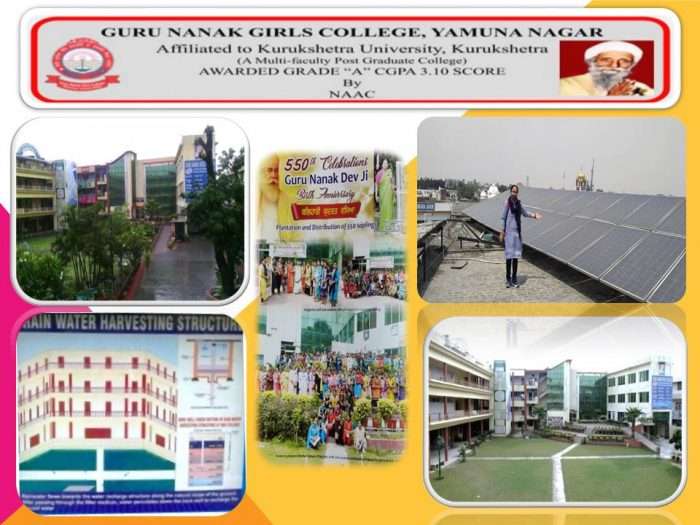
- To create awareness regarding environmental policy amongst the students and the staff.
- To maintain pollution free campus by avoiding tobacco, pan-masala chewing, smoking etc on the campus. No smoking signboards are fixed all over the premises.
- To observe ‘No Vehicle Day’ and keep the campus vehicle free. It helps to save the fuel, avoids the environmental pollution.
- To reduce the sound pollution in the campus, we have built the seating arrangements in the shade of trees in our campus.
- To protect and nurture the Flora and Fauna on the campus, botanical garden is being maintained
- To maintain green campus, Green Audit is done regularly.
B. Energy and Waste Management
- To use Solar Energy on College Campus by installing Solar Lights and Solar water geysers in girls hostel.
- To use energy efficient equipments like LED lamps, LED tubelights etc. for conservation of energy.
- To sensitize the students and staff regarding the use of drinking water properly for which, we have provided purified (RO aqua-guard) drinking water facilities on the campus.
- To bring in use the ‘Rain Water Harvesting’ on the campus. Rain water is collected and it is percolated in the land.
- To maximize the use of ICT and minimize the use of paper. It will help to go towards ‘Paperless Office’.
- To use the solid waste through vermin-compost on the campus and use it as a fertilizer for campus plants.
- To use ‘Use me’ Dry and Wet dust bins in the college campus so as to keep college campus clean.
- To make the campus plastic free, staff and students are encouraged to use jute bags and carry their own water bottles. “Say No to Plastic” signboards are fixed in various areas of the campus.
- To maintain energy management, Energy Audit is done regularly.
 01732-224372
01732-224372 gngcollegeynr@gmail.com
gngcollegeynr@gmail.com GNG College Santpura, Yamuna Nagar
GNG College Santpura, Yamuna Nagar
